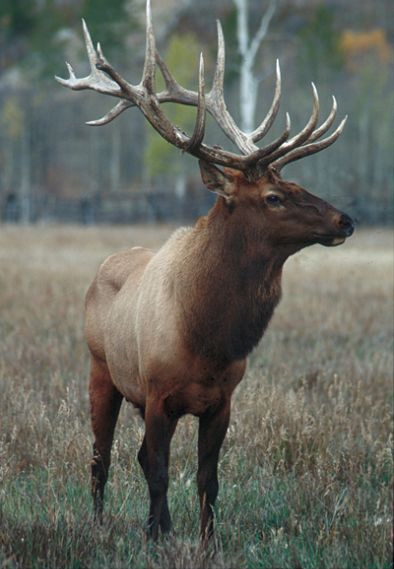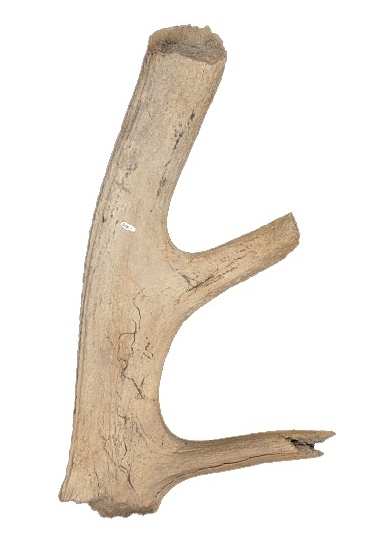Elk

since the Ice Age.
Elk (or wapiti) are members of the deer family and have their roots in the Ice Age of Eurasia. Their characteristic antlers, with the doubled lower tine, first appeared in the fossil record of Europe around 400,000 years ago. Elk were well adapted to survive the waxing and waning of warm and cold periods. Their fossils are more abundant and widespread from warmer periods of the Ice Age, when forests and shrubs were more common than grasslands. Even so, in some areas, elk fossils have been found from the peak cold periods of the Ice Age when trees were generally absent.
Elk are generalist herbivores that prefer open forests where they are able to forage on a mix of grasses and leafy shrubs. Their ability to survive in a wide range of habitats was probably the key to their survival past the end of the Ice Age. It seems that snow depth and exposure to harsh weather might be limiting factors that control their distribution today. There is a strong correlation between high average annual snow cover (greater than 40-50 centimetres) and the absence of elk.
Yukon's Ice Age Elk
The North American elk barely makes the cut as an ice age mammal of Yukon. They only appeared in North America as the Ice Age was coming to a close. Elk fossils are not very common at most ice age fossil sites in Yukon. However, those that have been radiocarbon dated are remarkably consistent in age. Most elk fossils in Yukon and Alaska date between 15,000 and 12,000 years ago. This was a time of rapid environmental change, with the Mammoth Steppe grasslands quickly being replaced by shrub birch and willow. Climates were becoming warmer and wetter.

the fossil record around
15,000 years ago.
While this change in climate was great for elk, it caused hardship for most of Yukon's ice age mammals—mammoth and horse populations crashed to extinction at this time. Elk survived the wave of extinctions, going on to inhabit most of North America. Elk bones are quite common in the early prehistoric camp sites of Yukon and Alaska. In fact, it is possible that ice age people had a taste for elk meat and groups of hunters followed them accross the Bering land bridge into the Americas.
Recent Discoveries
The study of ancient DNA from elk fossils provides great insight into the ice age history of elk and their connection to early humans in Beringia. Radiocarbon dates and DNA indicate that elk were consistently present in northeast Siberia over the last 50,000 years. Why then did they only migrate accross Beringia into North America at the end of the Ice Age? It seems that environmental conditions on the Bering land bridge prevented them from completing their migration eastwards to Alaska and Yukon. Once they made it to Yukon, elk quickly moved south as the glaciers receded. Although elk were locally extirpated in Siberia around 500 years ago, they are still common across North America, mostly in the west.
In Yukon, the story is a bit different. Radiocarbon dates indicate that elk lived in Yukon and Alaska until as recently as 4,000 years ago. What happened to them after that remains to be discovered. The elk that roam the forests of southern Yukon today were reintroduced here in the 1950s.

